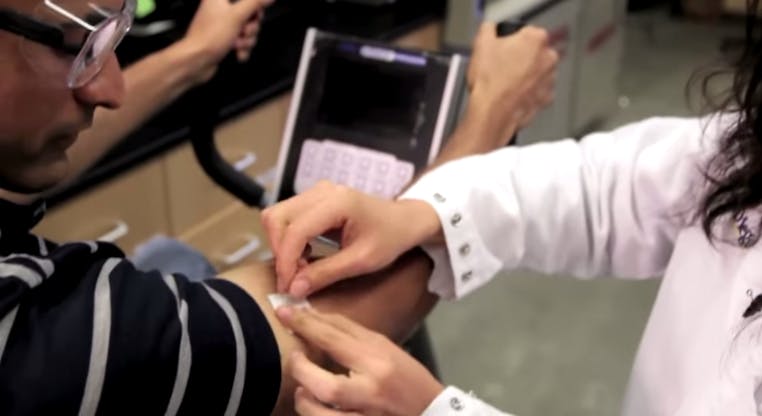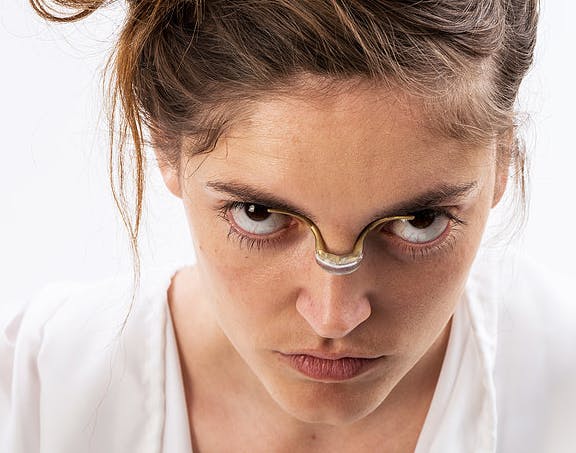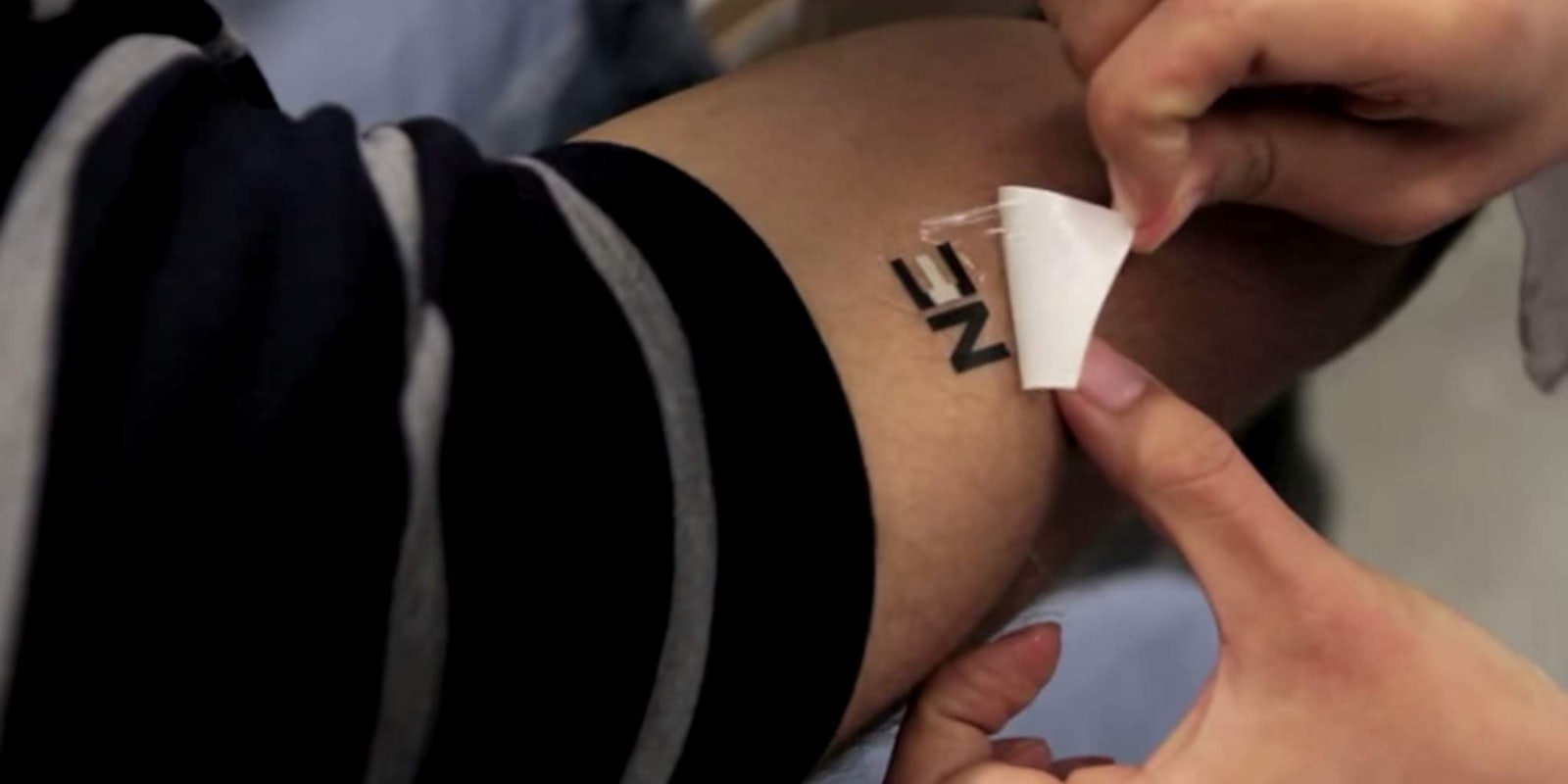It turns out that the most disgusting part of your workout might be the most useful.
A team of scientists at the University of California San Diego have developed a temporary tattoo that could one day power your smartphone. Equipped with what’s called a biobattery, the small tattoo harnesses the energy produced when you sweat and converts it into electricity.
Dr. Joe Wang, professor director of the Center for Wearable Sensors at UCSD, and his team introduced the biobattery tattoo at a meeting hosted by the American Chemical Society, explaining that it started out as a way to track lactate levels more easily. Lactate is a chemical produced by the body when it partakes in physical exertion by a process called glycolysis, or the breaking down of glucose. To track lactate levels now, researchers must use invasive tools to take blood samples at various increments.
The tattoo was originally designed as an easier method of tracking. The team, however, decided to take it one step further by attaching a small biobattery to the tattoo.

To test the product, 15 participants spent 30 minutes on a stationary exercise bike. Not surprisingly, the amount of energy produced (i.e., how much they sweat) differed among people with varying fitness levels. However, those who produced the most energy were those who were less fit. The researchers hypothesized that this was because people who exercised less got tired sooner, therefore speeding up glycolysis.
The maximum amount of energy was produced by a less fit tester at 70 microWatts per cm^2. In comparison, Wang said a watch requires at least 10 microWatts to power.
“So besides working to get higher power, we also need to leverage electronics to store the generated current and make it sufficient for these requirements,” Wang said.
The team knows the biobattery tattoo is only the first step in a long process in creating a useful product. “These represent the first examples of epidermal electrochemical biosensing and biofuel cells that could potentially be used for a wide range of future applications,” Wang said.
Relatively speaking, the development of biobatteries is still in its infancy, and it will likely be many years until the average consumer sees a functional yet affordable way to become a human outlet. What Wang and his team showed, though, is how we can transform ourselves into energy sources that not only would prevent us from constantly searching for the nearest place to plugin to charge our phones, but that would also be beneficial to the environment. Biobatteries do not emit harmful gases and utilize renewable energy already existing in nature—in this case, our bodies.
Earlier this year, a team of researchers at Virginia Tech created a sugar-powered battery that produced more energy per weight than a lithium battery, the kind of battery commonly found in many of our electronic devices. The trouble, Chemistry World described, was finding enough of that energy in nature, noting that it was the sugar produced within the human body—and the same sugar Wang and his team channeled to create the biobattery tattoo.
The cost of a biobattery would also be cheaper, the Virginia Tech team explained, though Wang and his team have yet to mention the potential cost of these high-tech temporary tattoos.
 Using the body as an electricity source has also permeated the world of fashion. In Israel, Naomi Kizhner created Energy Addicts, a line of jewelry equipped with tiny needles meant to puncture the wearer’s skin and gather the kinetic energy produced from the flow of blood and turn that into electricity and maybe one day power our cell phones.
Using the body as an electricity source has also permeated the world of fashion. In Israel, Naomi Kizhner created Energy Addicts, a line of jewelry equipped with tiny needles meant to puncture the wearer’s skin and gather the kinetic energy produced from the flow of blood and turn that into electricity and maybe one day power our cell phones.
Kizhner has told Cnet that the jewelry line, created for a graduation project at Hadassah College in Israel, doesn’t actually work. “The collection is mostly speculative but in the far-end scenario, we, our bodies, will be able to power everything,” she said.
Still, even the concept demonstrates the capacity to see energy as something more than a convenience we zap out of a wall. But for now, our sweat will remain a useless necessity of working out and our dying smartphones a constant curse.
H/T Factor-Tech | Screenshot via YouTube


